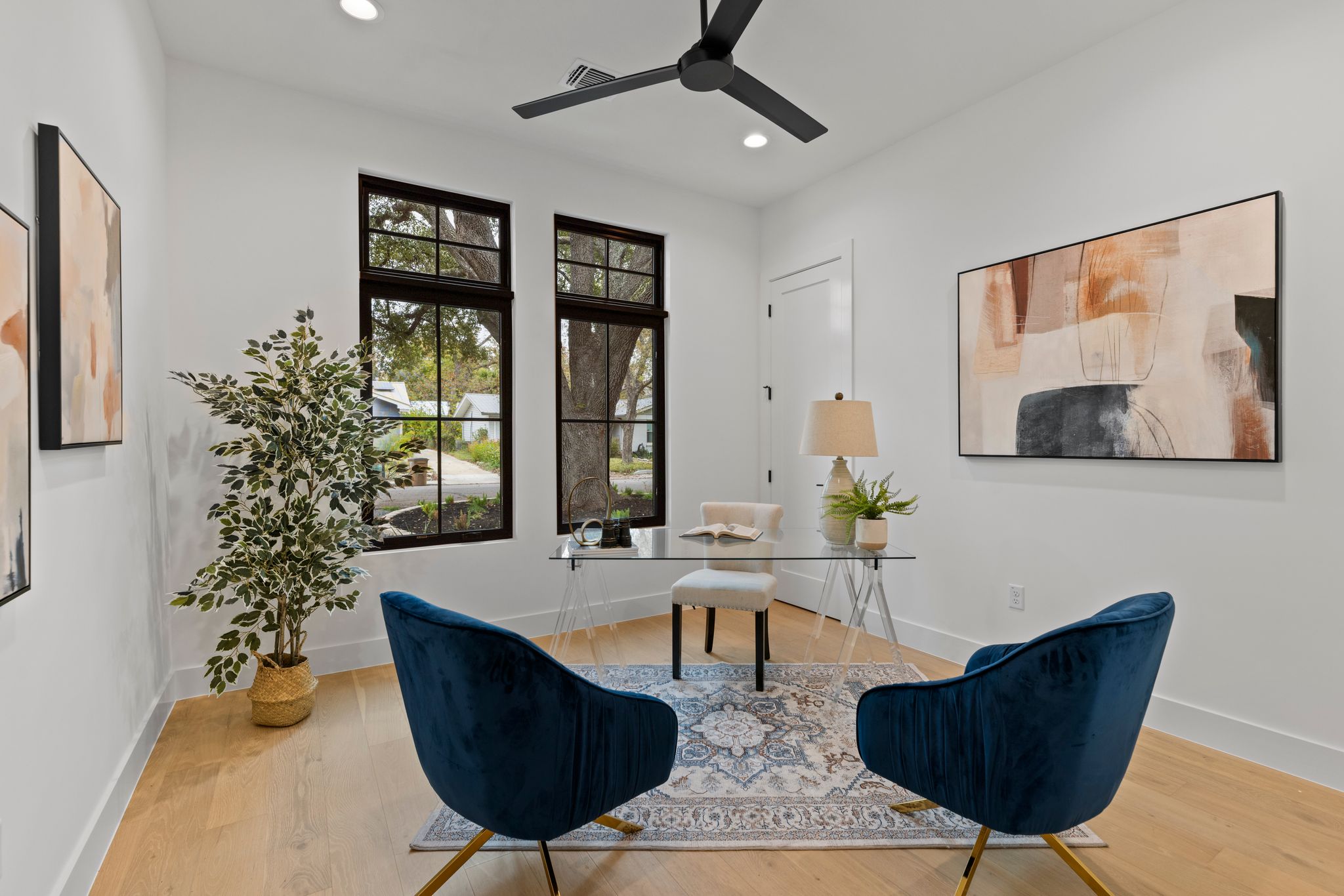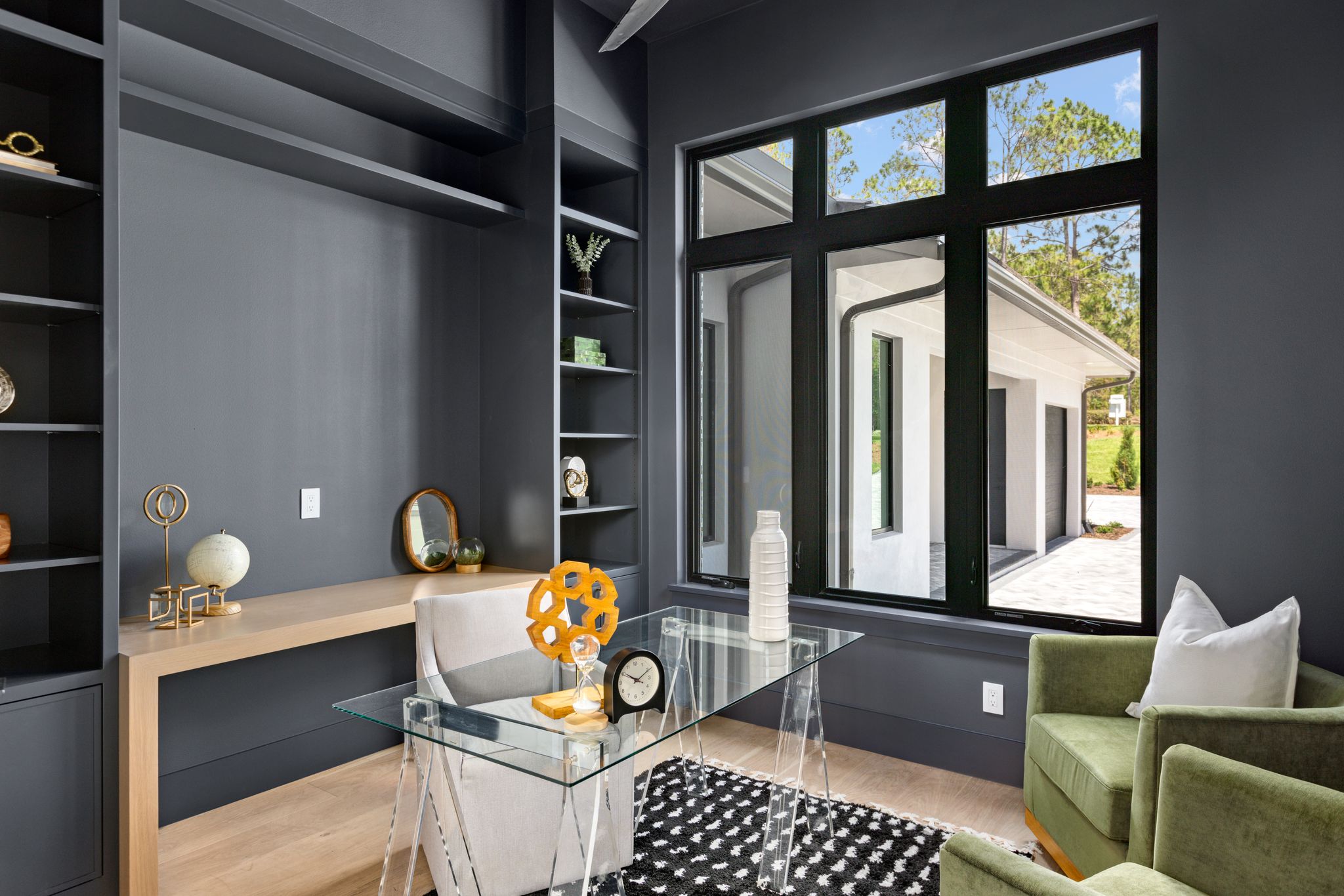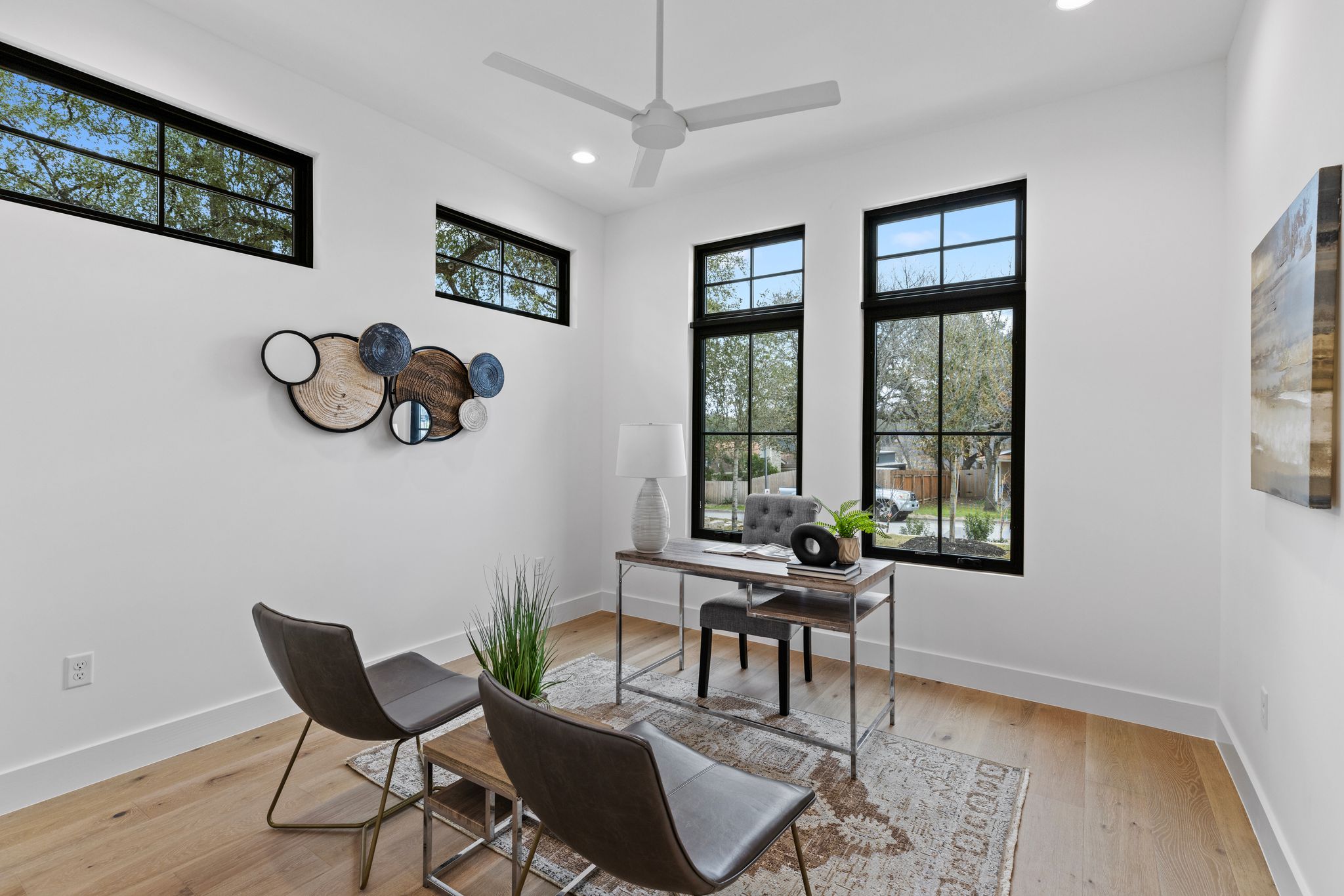When most people think about home staging, the “bigger” and more prominent rooms usually come to mind, like the living room, kitchen, and dining room. However, with so many people working from home since 2020, staging a home office is a crucial and often overlooked aspect of home staging.
If you don’t have a designated office space, you can always get creative and convert one of your guest bedrooms into a home office — instead of seeing another guest bedroom (boring!), buyers will be able to envision another (more practical) use for the room — a dedicated space for work and household tasks.
Key Takeaways
- A staged home office helps buyers envision a functional workspace, which has become more desirable since the rise of remote work.
- Keep the space clean, clutter-free, and neutral — focus on simple, high-quality furniture, soft colors, and plenty of lighting.
- Professional home staging can turn even a small or unconventional area into an appealing office setup that helps your home sell faster and for more money.
Staging a Home Office Ideas (from the Experts)
However, take it from us — there are some definite “dos” and “don’ts” when staging a home office. Below, we’ll share our expert tips for staging office spaces — and why you should hire a professional staging company to get the best bang for your buck when staging a home office.
1. Remove Clutter

Creating a clutter-free space is a general rule when it comes to staging any room. However, removing junk is especially important when staging a home office.
Most people don’t want to think about working at a desk cluttered with unnecessary office supplies, paperwork, and a dozen computer screens (even if — let’s be honest — the daily accumulation of bills and coffee cups is realistic). As a general rule, clear away all the clutter in your home office so your home stager can work with a blank slate.
2. De-Personalize and Store Personal Items
You might love having photos of your kids sitting on your desk while you’re working — but these personal touches prevent potential buyers from envisioning their own décor and families in the space. That said, make sure to remove family photos from your home office and replace them with wall art or neutral décor pieces.
You should also remove valuable objects, important paperwork, and confidential information (like passwords or bank statements) from your office before showing your home. You never know who will be coming in and out during showings, and this information is much safer tucked away in a safe or another secure location than stuffed in an easily accessible drawer or scribbled on a sticky note stuck on your computer screen.
3. Focus on High-Quality Furniture Essentials

Here’s what you should have in a staged home office — a clutter-free desk, a sleek office chair, a desk lamp, and something to fill the desk space, like a computer monitor. In a small space, less is more, but in a larger office, you might also want to consider adding an area rug, bookshelf, and accent chair to fill out the floor space.
Also, think about how to take advantage of the vertical space in your office. For example, installing a storage unit or shelves above the desk area can maximize storage space in a small room — just don’t fill these shelves with a bunch of clutter or unnecessary office supplies.
Here’s what you shouldn’t have in a staged home office — tons of devices, screens, and electrical cords piled on a particle board balanced on a couple of cardboard storage units (yes — it looks as bad as it sounds). While you may need a bunch of screens to do your job, this can make your home office look cluttered and small — so tuck these screens away in favor of more decorative pieces and long-lasting furniture instead.
4. Choose Neutral Colors and Accessories
Home offices should feel more like a restful retreat than a corporate setting — especially if the room’s potential functionality allows it to be a multi-functional space. For example, some people keep a day bed or a stylish futon in their home office to convert the area into a guest room easily.
That said, neutral colors for walls and flooring, like warm whites, creams, and grays, are ideal for creating an inviting but minimalist environment for getting in “the zone” to work. If you want to incorporate some bright colors, consider a few decor pieces or accessories, like window treatments, to add a “pop” of color.
5. Accentuate Natural Lighting and Choose Proper Light Fixtures

Most employees are more productive in spaces with plenty of natural light — which means that getting the lighting “right” in your home office is essential.
Ideally, you should have a large window in your home office, but you should also incorporate some floor lamps, task lighting, and overhead lights to supplement the window’s light. When possible, use LEDs — these bulbs are bright, energy-efficient, and don’t generate heat. And remember to turn all the lights on during walkthroughs (regardless of the time of day).
6. Get Creative With Your Office Space
If you’re tight on space and don’t have an extra room to convert into a home office, a home staging professional can help you maximize your square footage to create an office space out of otherwise unused space — like behind closed doors in a hallway closet or at the landing on top of the stairs.
If you use an unconventional (smaller) space instead of an entire room as a home office, remember to keep it as simplistic as possible with a desk, chair, lamp, and a few pieces of decor to prevent the space from feeling too crowded.
Leave Home Staging to the Professionals at THE STAGING COMPANY
As you can see, there is a lot to think about when it comes to staging a home office. When adding other rooms, like the kitchen, living room, and master bedroom, into the equation — hiring a home staging company to complete the job seems like a no-brainer!
Staged homes sell a month faster than vacant homes and, on average, for 17% more. Just think about getting 17% more on the sale of your house — that could be $10,000, $50,000, or even $100,000 more in your pocket — that’s a significant chunk of change for just one simple investment!
If staging sounds like the hassle-free investment you’ve been needing before listing your home on the real estate market, give us a call. We would love to stage your home in San Antonio, Austin, Tampa, and other cities across Texas and Florida.
Get an instant home staging quote.
No pressure and nothing to lose.

